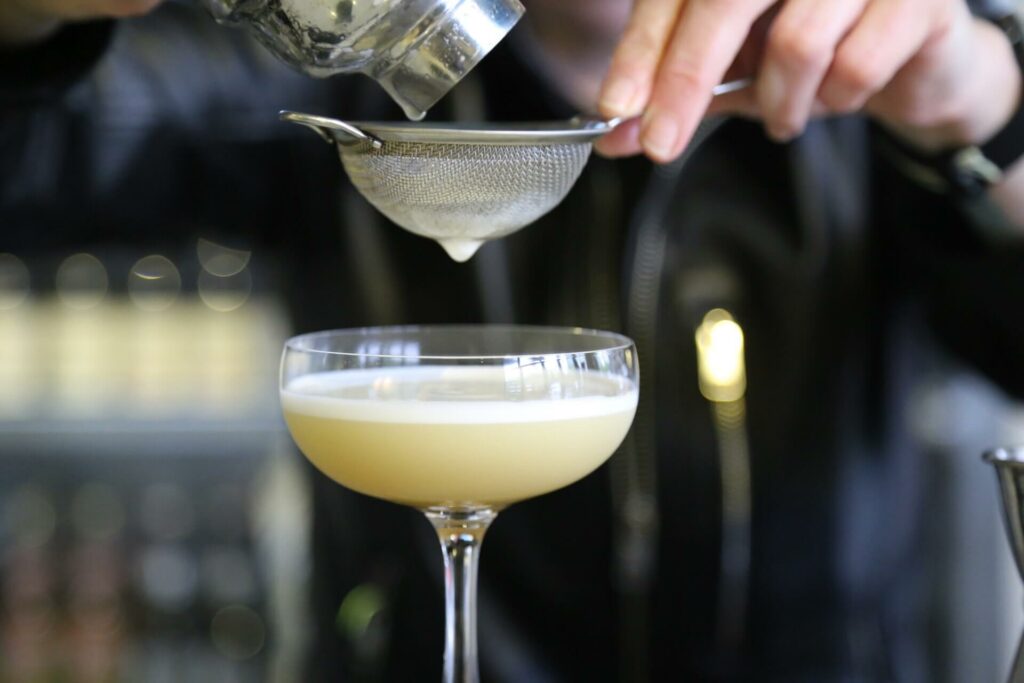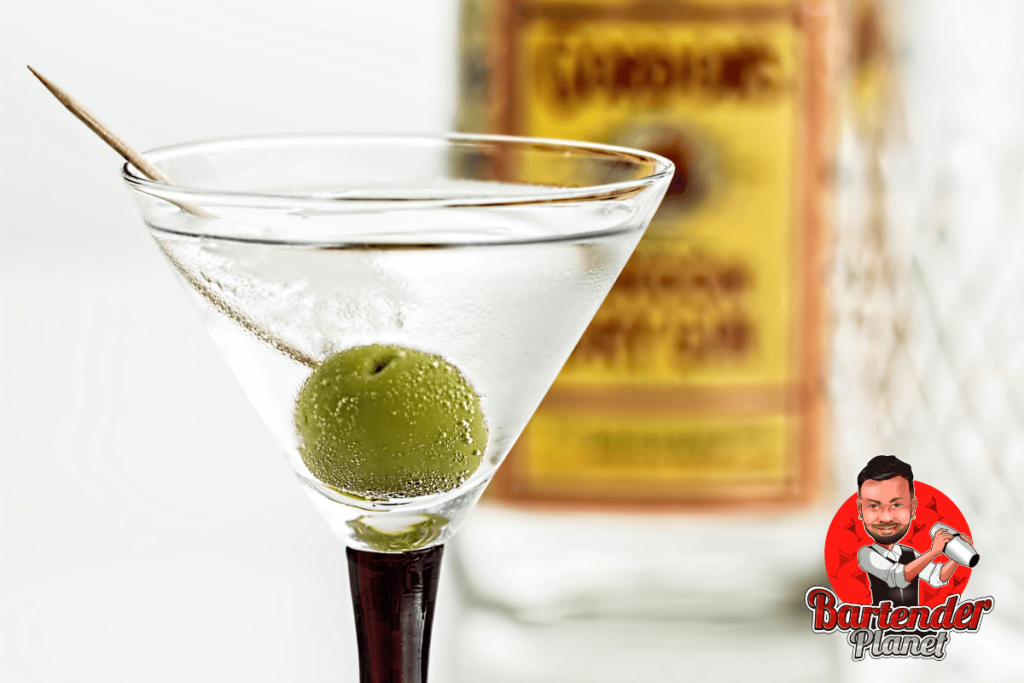Bartending is a complex craft that requires a keen eye for detail and a deep understanding of various techniques and terminologies.
But if you’re not too familiar with the industry or don’t find yourself in bars too often, the terminology can often be confusing and leave you feeling baffled.
With terms such as “part“, “neat”, “perfect“, “bruising“, and “straight-up”, it’s not difficult to see why many guests find themselves perplexed shortly after entering a busy bar.
That’s why in this post, we’re going to take a closer look at bartending terminology and specifically the term “up”, so what does up mean in bartending?
Let’s find out…
What Does “Up” Mean In Bartending?
The term “up” in bartending refers to the way in which a drink is served. A drink that is served “up” means that the drink has been shaken, stirred, or combined with ice and chilled, but is served WITHOUT ice.
Typically drinks that are served “up” are associated with a cocktail or stemmed glass, it’s the most common way to order cocktails such as Martini’s and other classic cocktails.
Oftentimes the patron does not need to specify that they want their cocktail to be served “up”, as this is just what’s assumed when ordering certain drinks.

The reason for serving drinks “up” is to chill the drink and mix the ingredients, before straining out any ice slivers or fruit pulps that may be in the mixture.
The result is a chilled, smooth, and consistent drink that is not diluted by ice or water, making the drink more concentrated over time as the temperature of the drink rises to room temperature.
Why Do People Order Drinks “Up”?
There are many reasons to order a drink “up”, but perhaps the most common is that it’s simply the standard way that many cocktails are served.
Patrons may receive an “up” drink without even realizing it, but those cocktail enthusiasts who know their terminology may also have their reasons for doing so.
Some drinkers simply prefer “up” drinks as it provides a smoother and more consistent flavor profile. As the drink is not being slowly diluted by ice, the drink stays the same consistency from start to finish.
The stemmed glassware and garnishes are also visually appealing, therefore, ordering drinks served “up” may be more satisfying and provide a touch of elegance to the drinking experience.
My partner is a big “up” drinker, especially when it’s cocktails with the girl’s night at bottomless brunch.

Another reason for drinking “up” is that the drink stays at a consistent temperature as it’s not being melted by ice, which can make them more appealing on hot sunny days.
As you can see, there are a number of reasons why patrons order drinks “up”, from not knowing that this is how the drink is being served to purposefully ordering this way on a hot summer’s day.
What Is The Difference Between Neat And Up?
The differences between terminology in bartending are subtle, but very important as they all provide a different drinking experience.
For bartenders, it’s crucial that they understand the differences between each terminology to ensure they are serving drinks correctly.
The difference between serving a drink “neat” and serving a drink “up” lies in the way that the drink is served and its temperature.
When a drink is served “neat“, it is poured straight from the bottle into the glass and served WITHOUT ice, mixers, or any other additives.
It’s essentially a room-temperature drink that has not been chilled or tampered with in any way. A “neat” drink can be slightly chilled if it has been stored in a cold room, but it will not have any dilution that comes with ice or mixers.

Whereas, when a drink is served “up”, it is chilled and strained, then served in a stemmed glass without ice.
The drink is cold as it’s been chilled, but it’s not being diluted from any ice or mixers, and it doesn’t have the added warmth that comes from serving the drink at room temperature.
So the main difference between serving a drink “neat” and serving a drink “up” is the temperature and dilution levels of the drink.
They both have different flavor profiles because of this and you’ll find that a drink served “up” will likely be stronger because of its lack of dilution.
This is part of why my partner loves “up” cocktails so much!
Strong with a kick!
What Drinks Are Often Ordered “Up”?
There are many drinks that are served “up”, and essentially and cocktail that is shaken or stirred with ice and then strained into a glass can be served “up”.
Below are just a few of the most common examples of drinks being served “up”.
| Cocktail Name | Main Spirit | Ingredients | Preparation |
| Martini | Gin or Vodka | Vermouth | Shaken or stirred with ice and strained into a chilled glass |
| Manhattan | Whiskey | Sweet Vermouth, Bitters | Shaken or stirred with ice and strained into a chilled glass |
| Cosmopolitan | Vodka | Cranberry Juice, Lime Juice, Triple Sec | Shaken with ice and strained into a chilled glass |
| Daiquiri | Rum | Lime Juice, Simple Syrup | Shaken with ice and strained into a chilled glass |
| Sidecar | Brandy | Triple Sec, Lemon Juice | Shaken with ice and strained into a chilled glass |
| Gimlet | Gin or Vodka | Lime Juice | Shaken with ice and strained into a chilled glass |
| Margarita | Tequila | Lime Juice, Triple Sec | Shaken with ice and strained into a chilled glass |
Wrapping Up
In summary, the term “up” in bartending refers to a drink that has been chilled then strained and served into a stemmed glass without ice.
It’s different from serving drinks “on the rock” or “neat” as it creates a smooth and textured drink that doesn’t have any dilution from ice or mixers.
Knowing what “up” means when ordering drinks is crucial for bartenders but will help patrons order with confidence and show off to their friends.
I hope this post has been helpful and provided a clear answer to the bartending term “up” and it’s meaning.
See you in the next one!


